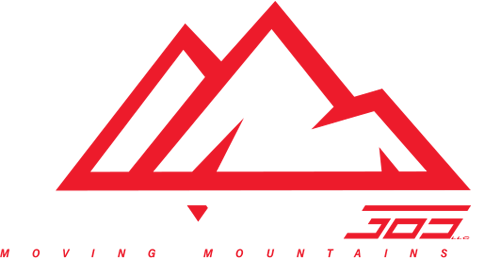“The solution to one problem is merely the creation of the next one.”
The Problem You Choose
Do I stick with what we’re doing now or bring up the problem? How much money are we losing by using these old systems that we have to babysit? Man, I really don’t like the tedium, I wonder how much would it cost and what all would be required to replace them with something modern? Do we even have the bandwidth to do something like that? I guess we would have more if we just did it. Or not.. oh man, what would the ROI be and how could I tell we know we got it? Should I just leave things as is?
Yep, been there. When we stop for a sec and think about it, when it comes to solving problems, we need to face the fact that we often get to choose which ones we want in our life. Heck, even recognizing that is a good thing! An amazing one, in fact. By taking time to purposefully introduce problems that you want to solve in your life, rather than those you don’t, you can focus on creating real value. Let me give you an example. A CRM (customer relationship management) system will introduce problems you may not have had to deal with before. Problems like updating the system, training users, enforcing metrics, and more. But if you don’t have a CRM, you might struggle with issues like tracking sales teams across multiple systems that don’t talk to each other, managing sales processes at scale, or simply keeping up with deals in an efficient way.

The Trade-offs of Custom Tools
Now, when it comes to building custom tools for your team, it can be tempting to create something tailored to your specific needs. And if you’re a smaller team, this might make sense. But there are trade-offs to consider: recruiting talent who are familiar with proprietary systems, scaling your solutions as your team grows, and more.
I’ve worked on plenty of projects where someone was excited about building a custom solution. And I’m always happy to help them create something amazing. But in the back of my mind, I’m also thinking about how this will scale for the long-term, whether it’s sustainable, and if it’s really the right answer for the entire organization.
Spreadsheets vs. CRMs: A Tale of Two Problems
Let’s play a thought experiment. Imagine you’re using spreadsheets to track inbound leads and sales opportunities. Sounds simple enough, right? But with spreadsheets comes a new set of problems: accuracy, access control, repeatable processes, and visibility into activity leading up to deals. On the other hand, when you switch to a CRM system, your problems shift from managing chaos to reining in creative ideas that might not be feasible. With a CRM, you’ve got a solid foundation for tracking contacts, but now you’ll start thinking about how to leverage those contacts in marketing campaigns – and that brings its own set of challenges.
Choosing Your System Problems
So here’s the thing: we get to choose our system problems. And with each solution comes new problems for the next day. That’s not a bad thing! It just means you’re moving forward, one problem at a time. The idea is to choose problems that you like having to solve – it all comes down to personal preference and what makes sense for your business. But there are objectively more desirable problems to have than others.
A Word of Caution
Before diving into CRMs as the silver bullet solution, take a moment to consider this: yes, they can revolutionize the way you do business when implemented properly. But with that comes new challenges and problems. So don’t get too excited – there’s still work to be done, except this time the problems are way more fun and impactful to nail down.

Bringin’ It Back Around
So yes, CRM’s will cause problems — but that means they’ll also be the catalyst for amazing solutions. Problems are a good thing to have and that’s a plus because they’re not going anywhere. It’s all about building the right problems around us that we enjoy solving. Things like having too much money coming in, too many web leads, too many sales to process, too many applicants, too many things to build in our systems — the list goes on and on. These are, arguably, good problems to have versus the flip side of not having enough of each.
I really like to emphasize the agency we have to choose our problems because I’ve been a part of groups that just want to “boo-hoo” complain about the ones they have yet do nothing about it. And that sucks. Nobody wants to be around that. This is a “can do” business, baby! Empowerment is what it’s all about, we have total control over what we let rule our lives. Problems are just part of the package and they can be our fuel or our kryptonite. Trick is that we get to choose which.
Excerpt from Mark Manson‘s book, The Subtle Art of Not Giving a F*ck: A counterintuitive Approach to Living a Good Life:
“Problems never stop; they merely get exchanged and/or upgraded.
Happiness comes from solving problems. The keyword here is “solving.” If you’re avoiding your problems or feel like you don’t have any problems, then you’re going to make yourself miserable. If you feel like you have problems that you can’t solve, you will likewise make yourself miserable. The secret sauce is in the solving of the problems, not in having problems in the first place.
To be happy we need something to solve. Happiness is therefore a form of action; it’s an activity […]. It doesn’t magically appear when you finally make enough money to add on that extra room to the house. You don’t find it for you in a place, an idea, a job — or even a book, for that matter.
Happiness is a constant work in progress, because solving problems is a constant work-in-progress — the solutions to today’s problems will lay the foundation for tomorrow’s problems, and so on. True happiness occurs only when you find the problems you enjoy having and enjoy solving. […] Whatever your problems are, the concept is the same: solve problems; be happy.”


